Rigorous product testing and research and development (R&D) in sport require two major factors. First, human subjects to perform actions, then advanced technology to record and analyze data. This is why motion capture for sports is so vital – it provides accurately tracked athletic movements for clinicians, apparel and footwear designers, sport coaches, and biomechanics experts to evaluate.
One of the world’s leading sportswear, shoe and equipment manufacturers, Mizuno, has streamlined mocap processes at its new facility, with the Osaka-based company working with us at Motion Analysis to gather quantitative performance data to launch better sporting goods, faster.
Here’s how Mizuno upgraded its mocap system to advance its capabilities in R&D in sport, a leading trend in the biomechanics space:
A partnership in motion, powering R&D at Mizuno’s new facility
Mizuno, fittingly bearing the brand slogan ‘Reach Beyond’, provides sportspeople with the highest quality equipment and clothing to improve athletic performance. Working within soccer, track and field, golf, volleyball and many other sporting disciplines, Mizuno’s researchers require the ability to track unique movements in both indoor and outdoor environments using prototypes and real athletes.
Having used Motion Analysis’ 3D motion capture for product testing since 2005, Mizuno opened its state-of-the-art innovation center, MIZUNO ENGINE, in 2022—a space for designers and R&D units to create, test, and fine-tune its product range. The company also upgraded its Motion Analysis camera setup, in line with its drive to continuously innovate.
Behind the scenes at the Mizuno facility
Originally, Mizuno used 3D motion capture for computer graphics purposes, applying its data to unique digital models during apparel design, as well as to observe changes in performance before and after a human actor tried out new sportswear or equipment.
With work undertaken by product testers, R&D specialists and sport coaches diagnosing athletes’ conditions, a flexible solution is vital to present large volumes of accurate, shareable data within an intuitive user interface, and to recognize markers in real time.
Mizuno now uses two systems to facilitate motion capture for sports, equipped with Kestrel 2200 cameras housed in the larger 6,500 m² Mizuno facility. The established R&D center includes a laboratory to measure product durability in controlled environments, and motion capture data can be collected from athletes actively testing prototypes on a running track or in a gym.
On the running track, the system gathers movement data from 8 fitted force plates buried in the track. 3D motion cameras are attached to a lane, enabling research to move to another indoor area quickly. The Kestrel 2200 system is also used with a Bertec instrumented treadmill, purposely built to obtain specialized running and walking data. It has high rigidity to maintain a natural-feeling environment for its product testers, with the aim of gathering data as close to a normal running situation as possible.
The need for speed, propelled by innovative technology
Before working with Motion Analysis, Mizuno’s previous 3D movement analysis system only received images from two units of high-speed cameras, where its lack of accuracy led to material testing rather than applications involving real people. Product performance in the past was also measured subjectively.
Now, Mizuno uses the Kestrel system to produce fast, quantitative data that can more precisely prove R&D methodology than the original camera images. It helps to understand how kinematics relate to sport performance, and highlights individual features which need to be practically improved according to the preferences of test subjects.
Prototypes are developed on the second floor of the facility and can immediately be tested on-site by R&D teams using the mocap systems on the first floor. Before, previous prototyping took place in overseas factories. The development process has been sped up, particularly for shoes where performance is easily affected by their materials.
The future of motion capture for sports
Up to 50 research efforts have already been undertaken at the new Mizuno facility, including the successful testing of track spikes, walking shoes, and sporting apparel.
Mizuno next aims to utilize FBX data from Cortex’s Calcium Solver optimization tool to work with its 3D fashion design software. Resulting motion data can also be used to expand various product development methods including musculoskeletal simulation, computer-aided apparel design, and motion classification across a range of sports.
Research and development in sport is rapidly picking up speed with motion capture. If you’re looking to achieve mocap success like Mizuno, book a demo to see how we can assist your team today.


























